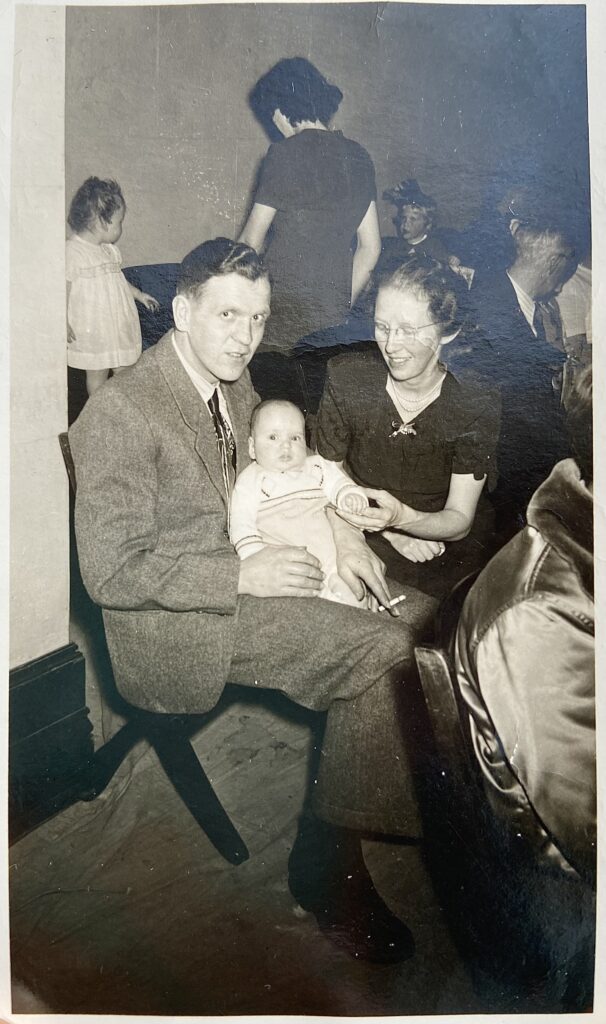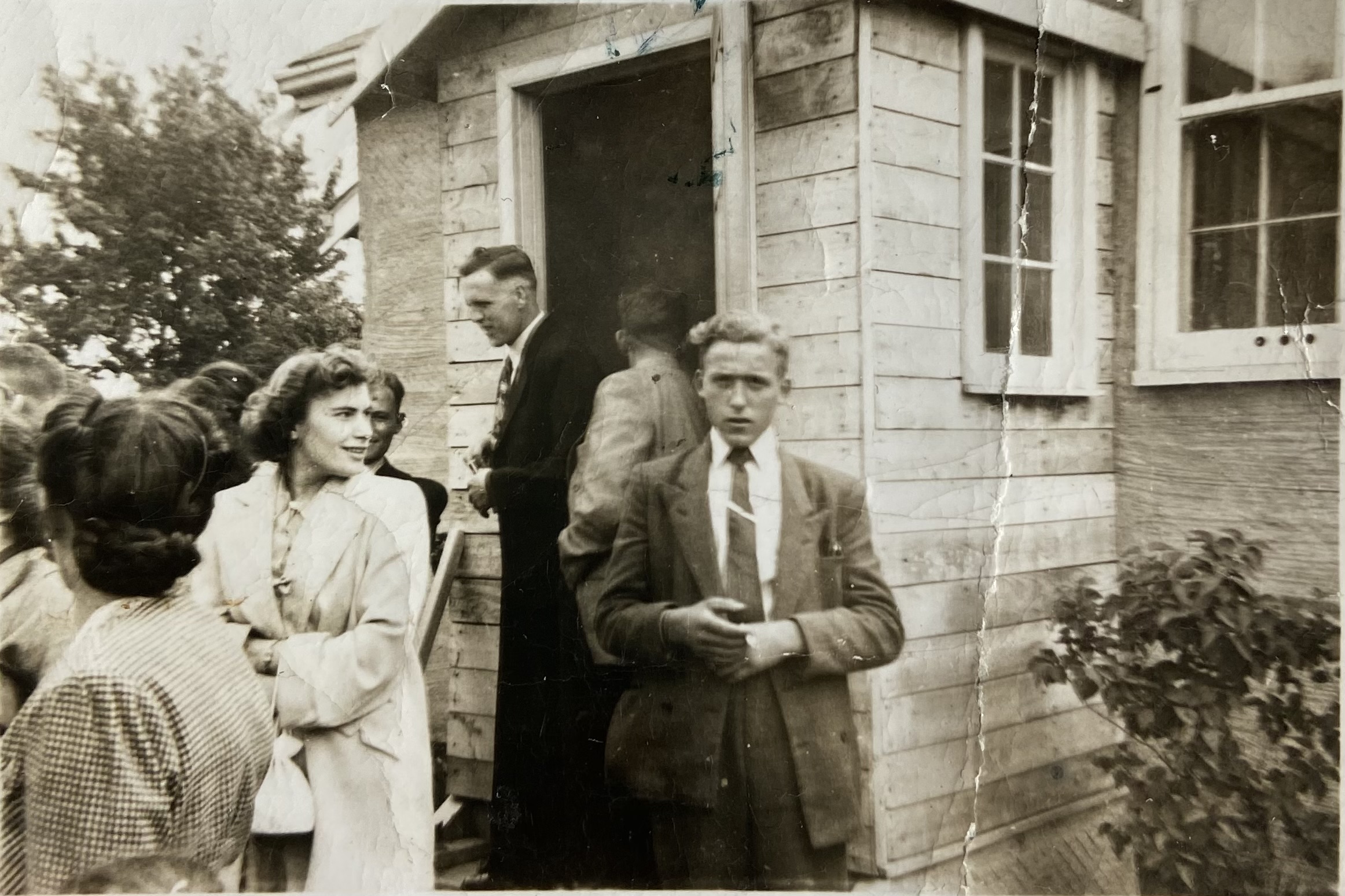If you drive through Edmonton neighbourhoods, you’ll see many churches with names that reflect the cultural background of the immigrants who brought that church to Canada: Ukrainian, Mennonite, Coptic, among others.
If you take a turn through the leafy, tree-lined streets of the Sherbrooke neighbourhood, you may drive past a church with the sign “Providence Canadian Reformed Church.” While the sign proclaims the church’s love and connection to the country now established in, this church was built by Dutch immigrants who left their war-torn country after the Second World War.

Many, including my grandparents, came to Canada to build a new life, and their church was an inseparable piece of their life wherever they were in the world. This explains why, despite the struggles and hardships of starting over in a country where they did not know the language and which was vast and lonely compared to their crowded mother country, they committed themselves to building a church in this new country they now called their home.
“We, or our parents, immigrated to Canada,” wrote the first minister of this church, Rev. Jules Van Popta, in 1963, thirteen years after the church was instituted. “By immigrating to Canada and choosing to live here we made a decision about our future and the future of our children and grandchildren. But it did not only affect our future. By immigrating to Canada we also brought about a change to our past and to the past of our descendants. By leaving ‘the old country’ as emigrants we were broken off its tree and by immigrating to Canada we were engrafted into the Canadian tree.”[1]
Dutch immigrants tend to have high levels of integration into their new culture, which can be seen in this willingness to take on a Canadian identity. At the same time, the community of their church provided a way for them to maintain aspects of their culture and connect with others who shared their experience.
What did it take to rebuild their church in this new country?It took coming together as a community in this new country. It took organization. It took a willingness to sacrifice to build the church, when there were many pressing priorities in this new life.
Beginnings
First, the like-minded Dutch immigrants had to find each other. In the late 1940s, the first immigrants of this post-war wave began coming over, often as agricultural workers.[2] They found themselves on the vast prairie, often in houses that lacked the amenities they were used to, such as electricity, running water, and doctors close at hand. In this strange environment, Sunday worship became central for finding community, and immigrants sought out churches such as the Christian Reformed Church which had been begun by previous Dutch immigrants to North America in the 1850s. Immigrants from the same church background in the Netherlands started to find each other on Sundays at these services, talk together, and discuss having a church of their own.
In Edmonton, a group that included my grandparents, as well as immigrants from the surrounding areas as far away as 160 miles,[3] began to gather for the purpose of organizing their own church. With encouragement from other groups in southern Alberta who were also building a church in their community, and with advice from a visiting Dutch minister, Rev. Hettinga (who, in fact, was the one to advise them to choose the name of Canadian Reformed Church, after their new country), they began. According to the memories of one member, Klaas DeVries, it was likely centred in Edmonton despite the distant spread of where everyone lived because Edmonton was the major city in the area, and the place future immigrants would most likely come.
On July 9, 1950, 54 people gathered in the Winkel family home to institute this new Canadian Reformed Church in Edmonton.[4] “When looking at the pictures you can see we had a ‘full house’ (and only one bathroom),” writes Ralph Winkel in his reflections fifty years after the event. “Elders and deacons were chosen and installed.”[5] He elaborates further on the history of this little group: “The first reading services were held in the Bible Presbyterian Church located on 92 Street and Jasper Avenue in Edmonton. I remember that the first service (meeting) was held at 11 a.m. and the second service began at 1 p.m. All of us brought a lunch.”

Later locations for services included the I.O.O.F. hall, the Alberta College Gym, and a Quonset building behind the Seventh-day Adventist church building at 149 Street and 102 Avenue.
Members continued to come from far around. One church member, Klaas Devries, was a child at the time and remembers driving into Edmonton for church from Blackfalds. Initially the family would catch the Greyhound and later on drove in themselves in a 1937 DeSoto with a broken heater.
[Klaas Devries] remembers one icy winter drive in particular, when his father had to wrap his head in a thick scarf and stick his head out the window in order to be able to see the road and safely navigate the family home again.
After institution, one of the first actions was to get the word out to both encourage immigration from the Netherlands and connect with new immigrants who were arriving.[6] As the 50s went on, policies adopted by the Dutch and Canadian governments made the immigration process easier, and more professional workers began coming over as well as agricultural workers. Overall, an estimated 185 000 Dutch immigrated to Canada after the Second World War, a number of which settled around Edmonton.[7] Beyond growing the church membership, another priority was to find a minister to lead the worship. The name of Rev. Jules Van Popta was suggested, a minister one of the elders had known in the Netherlands. After much organization to bring a minister over to Canada from the Netherlands, Rev. Van Popta eventually arrived in 1951. One of the first things Rev. Van Popta had to do was baptize the many babies that had been born in the time without a minister, a group of three which included my father.

Challenges
A few years after his arrival, Rev. Van Popta wrote to his brother in the Netherlands:
“It’s not an easy congregation… The families have come here from all corners of the Netherlands. Differences in character, orientation, and viewpoint sometimes cause conflicts. They still have to grow together here.”[8]
It certainly wasn’t easy. Life was harsher in Edmonton at the time. Banks were not so lenient in those days, turning families out of their homes if mortgage payments were missed. Credit wasn’t easy to get. Jobs were hard to come by, especially in winter, and sometimes people really did lose everything. An Edmonton Journal article in 1956 reports the death of a Canadian Reformed Church member due to the collapse of a sewer ditch he’d been digging, demonstrating the difficulties and dangers of getting by.[9]
Beyond that, World War II had stamped its effects on the lives of these immigrants. Rev. Van Popta’s father died in a concentration camp. Others had hidden Jews in their homes, or survived by stealing sugar beets during the worst years of the war. My grandfather fought in the Dutch resistance, blowing up infrastructure the Germans had been using. This shaped the church as people who’d survived, and yet who were processing the aftermath of their wartime experience. Canada was a peaceful contrast to what they’d lived through, but wartime experiences are not quickly left behind.
These struggles reflected in the life of the church. Money was always tight—Rev. Van Popta initially did his visits to the congregation by bicycle,[10] and another church member remembers a two-year-long bottle drive by the organist, Bert Koning, to raise money for a new organ.[11]
Volunteer work was necessary, and an item in an early meeting minutes reads, “Two collection bags will be procured. The steelwork has been done by brother Smit, who also appears to be a smith; the handles will be attached to it by brother Wiegers, after which the daughters of brother VanRaatle will complete the work.”[12] The necessity of working together meant that the members did have to grow together and learn to function as one church body, which was not always a straightforward process, as Rev. Van Popta’s letter demonstrates.
But despite the sacrifices necessary to build the church and grow together in community, the church did not give up or fade away. In 1963, the building that the church still worships in today was completed.[13] Members drew together over the years, focused on the God who united them despite their differences. From the small group of 54 people who were present on July 9, 1950 when the church in Edmonton was instituted, has sprung not just this building and this congregation which still meets there, but three “daughter” churches of the same denomination from St. Albert to Devon. While many of the original members have scattered across Canada, and many have passed away, grandchildren and great-grandchildren continue to attend, among the many members who have joined over the years. The Dutch language may not be a commonly heard language in the church sanctuaries anymore, but the language of faith shared with their ancestors continues to echo into the present.
Harma-Mae Smit. (2022)

“Church Street” shows area depicts diverse religous community spaces for generations of immigrants.
References
[1] George van Popta, Man of the First Hour: A Son’s Story (Reformed Perspective Press, 2021), 162
[2] John DeHaas, And Replenish the Earth (New Westminster: Covenant Publishing, 1987), 27. W.W.J. VanOene, Inheritance Preserved (Winnipeg: Premier Printing Ltd., 1975), 67.
[3] VanOene, Inheritance Preserved, 75.
[4] VanOene, Inheritance Preserved, 76.
[5] Ralph Winkel, “Reflections,” Clarion, June 9, 2000, 278.
[6] “In practically every Church that was formed, one of the first things that was done was: to establish an immigration committee and try in this manner to attract more immigrants,” writes Rev. Van Oene, in his book about the beginnings of Canadian Reformed churches across Canada. VanOene, Inheritance Preserved, 87.
[7] Jan Raska, “Postwar Dutch Immigration Through Pier 21,” Canadian Museum of Immigration at Pier 21, accessed March 12, 2022, https://pier21.ca/blog/jan-raska-phd/postwar-dutch-immigration-through-pier-21.
[8] Van Popta, Man of the First Hour, 84-85.
[9] “Man Loses Life in Sewer Ditch,” Edmonton Journal, August 25, 1956, 20. http://ezproxy.ae.talonline.ca/login?qurl=https%3A%2F%2Fwww.proquest.com%2Fhistorical-newspapers%2Faugust-25-1956-page-1-42%2Fdocview%2F2397103950%2Fse-2%3Faccountid%3D46585.
[10] VanOene, Inheritance Preserved, 97. Van Popta, Man of the First Hour, 54.
[11] Story told to George van Popta by Pauline DeHaas. Van Popta, Man of the First Hour, 73.
[12] VanOene, Inheritance Preserved, 99.
[13] D.S. Postma, “Fiftieth Anniversary celebration of the Canadian Reformed Church at Edmonton,” Clarion, November 24, 2000, 546.
Lists of Sources
DeHaas, John. And Replenish the Earth. New Westminster: Covenant Publishing, 1987.
DeVries, Klaas. Personal Communication with author.
Laforest, Jennifer. (2013, May 6). Church Street – Edmonton’s Sacred Heritage. Spacing Edmonton. https://spacing.ca/edmonton/2013/05/06/church-street-edmontons-sacred-heritage/
“Man Loses Life in Sewer Ditch.” Edmonton Journal, August 25, 1956. http://ezproxy.ae.talonline.ca/login?qurl=https%3A%2F%2Fwww.proquest.com%2Fhistorical-newspapers%2Faugust-25-1956-page-1-42%2Fdocview%2F2397103950%2Fse-2%3Faccountid%3D46585.
Postma, D.S. “Fiftieth Anniversary celebration of the Canadian Reformed Church at Edmonton.” Clarion, November 24, 2000.
Raska, Jan. “Postwar Dutch Immigration Through Pier 21.” Canadian Museum of Immigration at Pier 21. Accessed March 12, 2022. https://pier21.ca/blog/jan-raska-phd/postwar-dutch-immigration-through-pier-21.
Smit, Ron. Personal Communication with author.
Van Popta, George. Man of the First Hour: A Son’s Story. Reformed Perspective Press, 2021.
VanOene, W.W.J. Inheritance Preserved. Winnipeg: Premier Printing Ltd., 1975. Winkel, Ralph. “Reflections.” Clarion, June 9, 2000.

